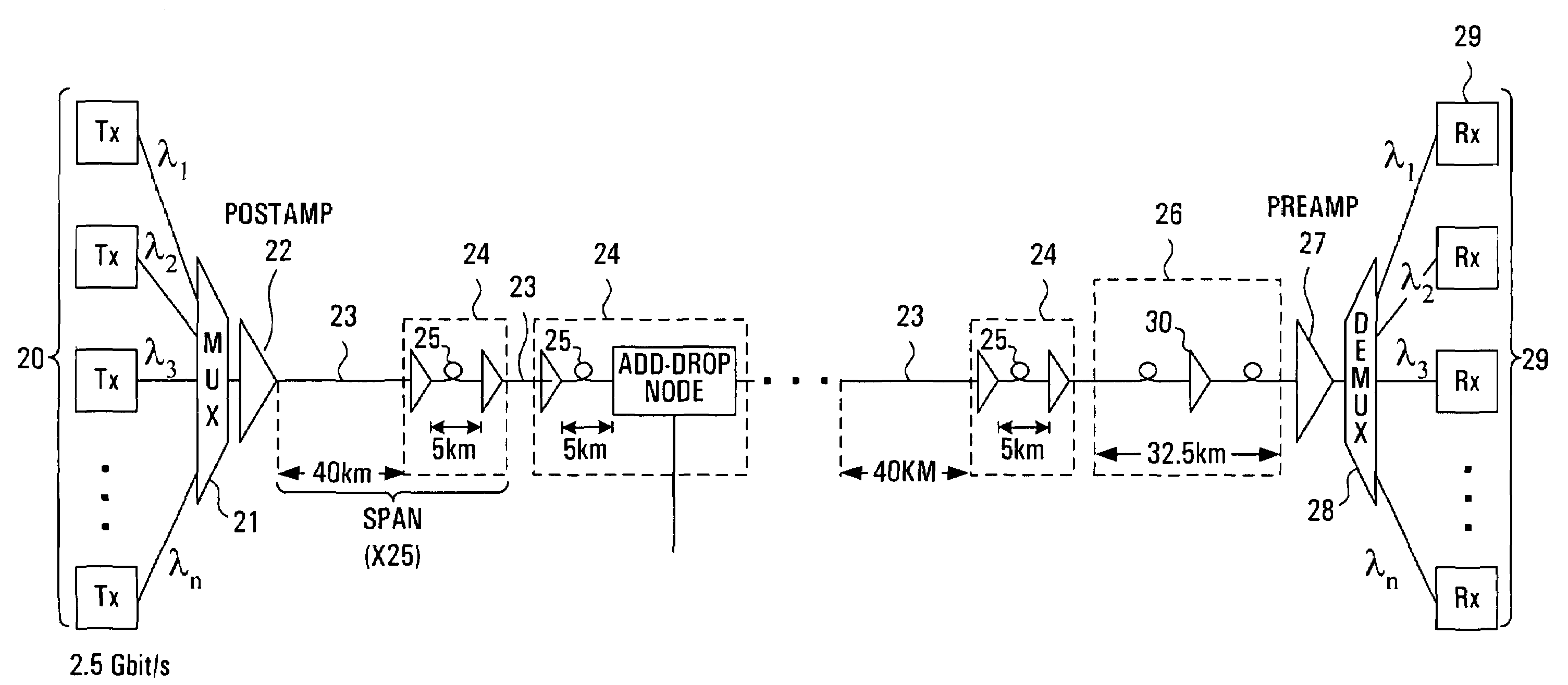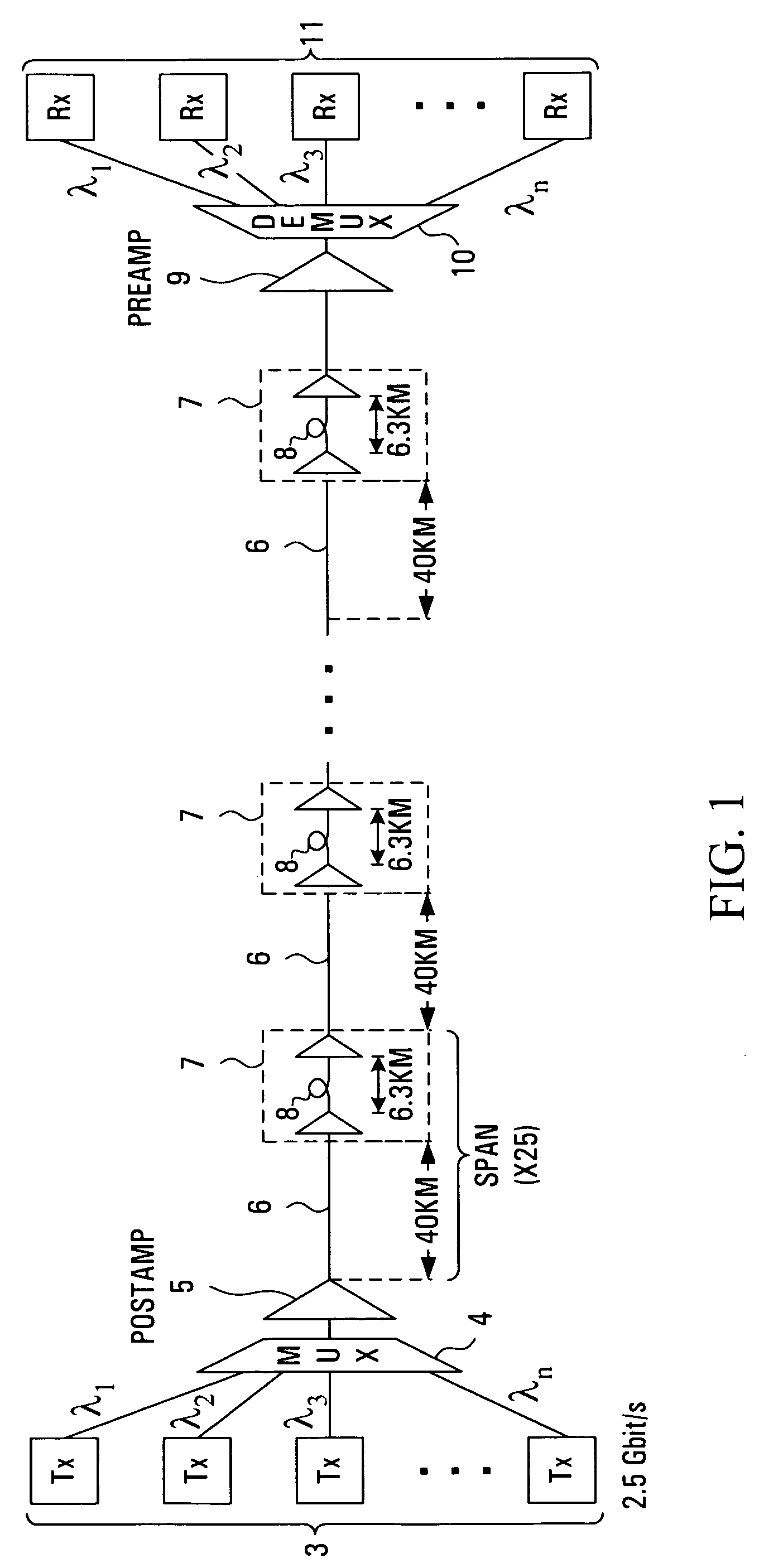Suppression of four-wave mixing in ultra dense WDM optical communication systems through optical fibre dispersion map design
a technology of optical communication and dispersion map, which is applied in the direction of electromagnetic transmission, multi-communication, wavelength-division multiplex system, etc., can solve the problems of reducing transmission quality and the inability to provide the optimal net system dispersion through the use of such a dispersion map
- Summary
- Abstract
- Description
- Claims
- Application Information
AI Technical Summary
Benefits of technology
Problems solved by technology
Method used
Image
Examples
Embodiment Construction
[0026]Referring to FIG. 1, the transmit path of a typical dense wavelength division multiplexed (DWDM) system spanning approximately 1000 km is shown. An array of optical transmitters 3 is connected to an optical multiplexer 4, the output of which is fed through an optical post-amplifier (POSTAMP) 5 and into an optical link comprising a plurality of serial spans extending between the post-amplifier 5 and an optical pre-amplifier (PREAMP) 9. The output of optical pre-amplifier 9 is connected to an optical demultiplexer 10 which is, in turn, connected to an array of optical receivers 11. Each serial span in the link comprises a length of optical transmission fibre 6 followed by a dispersion compensating module (DCM) 8 buried within a two-stage optical line amplifier 7.
[0027]The transmitters 3 usually consist of high resolution (or narrowband) lasers transmitting in the 1550 nm wavelength band. Narrowband transmit lasers are important for allowing close channel spacing and for minimisi...
PUM
 Login to View More
Login to View More Abstract
Description
Claims
Application Information
 Login to View More
Login to View More - R&D
- Intellectual Property
- Life Sciences
- Materials
- Tech Scout
- Unparalleled Data Quality
- Higher Quality Content
- 60% Fewer Hallucinations
Browse by: Latest US Patents, China's latest patents, Technical Efficacy Thesaurus, Application Domain, Technology Topic, Popular Technical Reports.
© 2025 PatSnap. All rights reserved.Legal|Privacy policy|Modern Slavery Act Transparency Statement|Sitemap|About US| Contact US: help@patsnap.com



